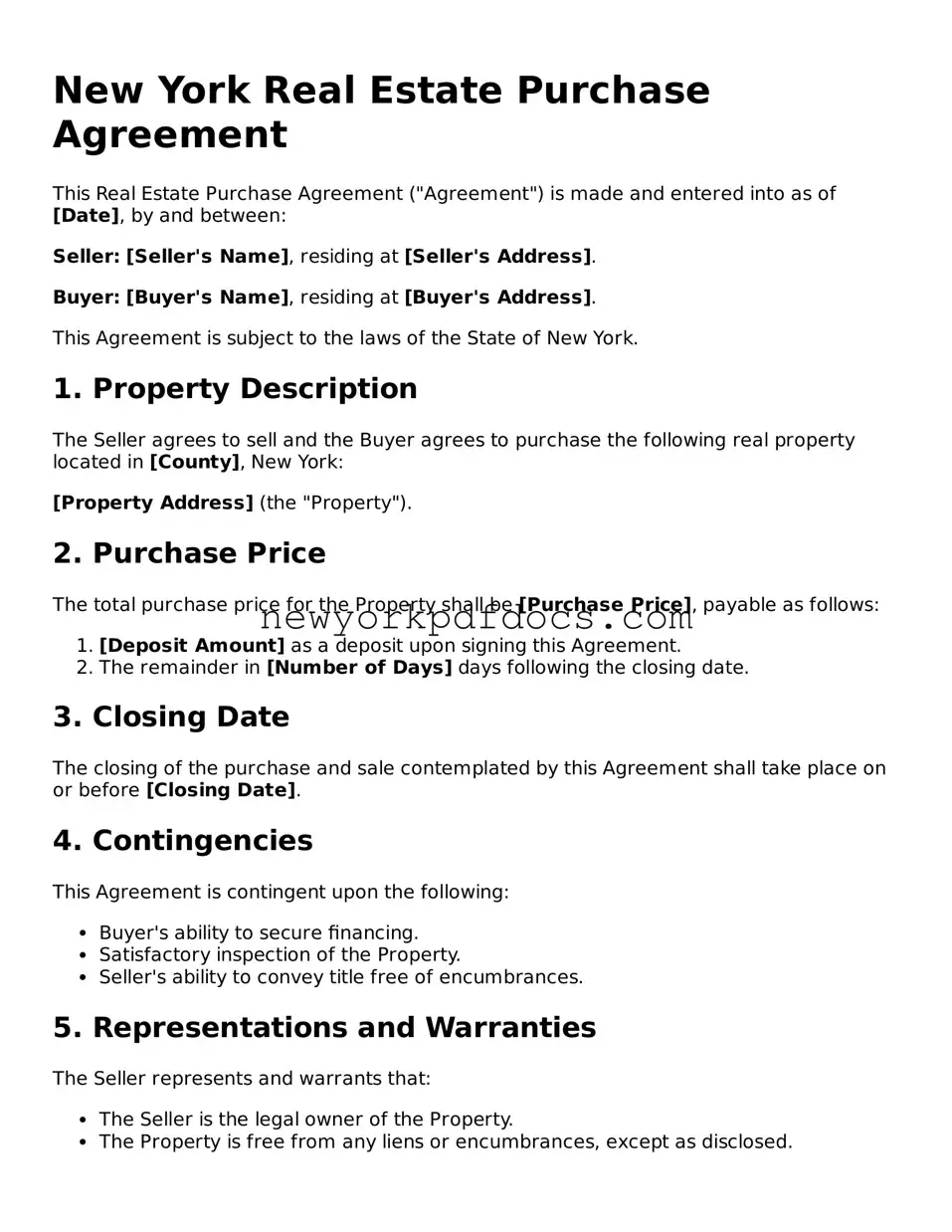New York Real Estate Purchase Agreement
This Real Estate Purchase Agreement ("Agreement") is made and entered into as of [Date], by and between:
Seller: [Seller's Name], residing at [Seller's Address].
Buyer: [Buyer's Name], residing at [Buyer's Address].
This Agreement is subject to the laws of the State of New York.
1. Property Description
The Seller agrees to sell and the Buyer agrees to purchase the following real property located in [County], New York:
[Property Address] (the "Property").
2. Purchase Price
The total purchase price for the Property shall be [Purchase Price], payable as follows:
- [Deposit Amount] as a deposit upon signing this Agreement.
- The remainder in [Number of Days] days following the closing date.
3. Closing Date
The closing of the purchase and sale contemplated by this Agreement shall take place on or before [Closing Date].
4. Contingencies
This Agreement is contingent upon the following:
- Buyer's ability to secure financing.
- Satisfactory inspection of the Property.
- Seller's ability to convey title free of encumbrances.
5. Representations and Warranties
The Seller represents and warrants that:
- The Seller is the legal owner of the Property.
- The Property is free from any liens or encumbrances, except as disclosed.
6. Notices
Any notices required under this Agreement shall be delivered to the following addresses:
- For the Seller: [Seller's Contact Information]
- For the Buyer: [Buyer's Contact Information]
7. Governing Law
This Agreement shall be governed by and construed in accordance with the laws of the State of New York.
8. Signatures
IN WITNESS WHEREOF, the parties hereto have executed this Real Estate Purchase Agreement as of the date first above written.
__________________________
Seller's Signature
__________________________
Buyer's Signature
__________________________
Date
